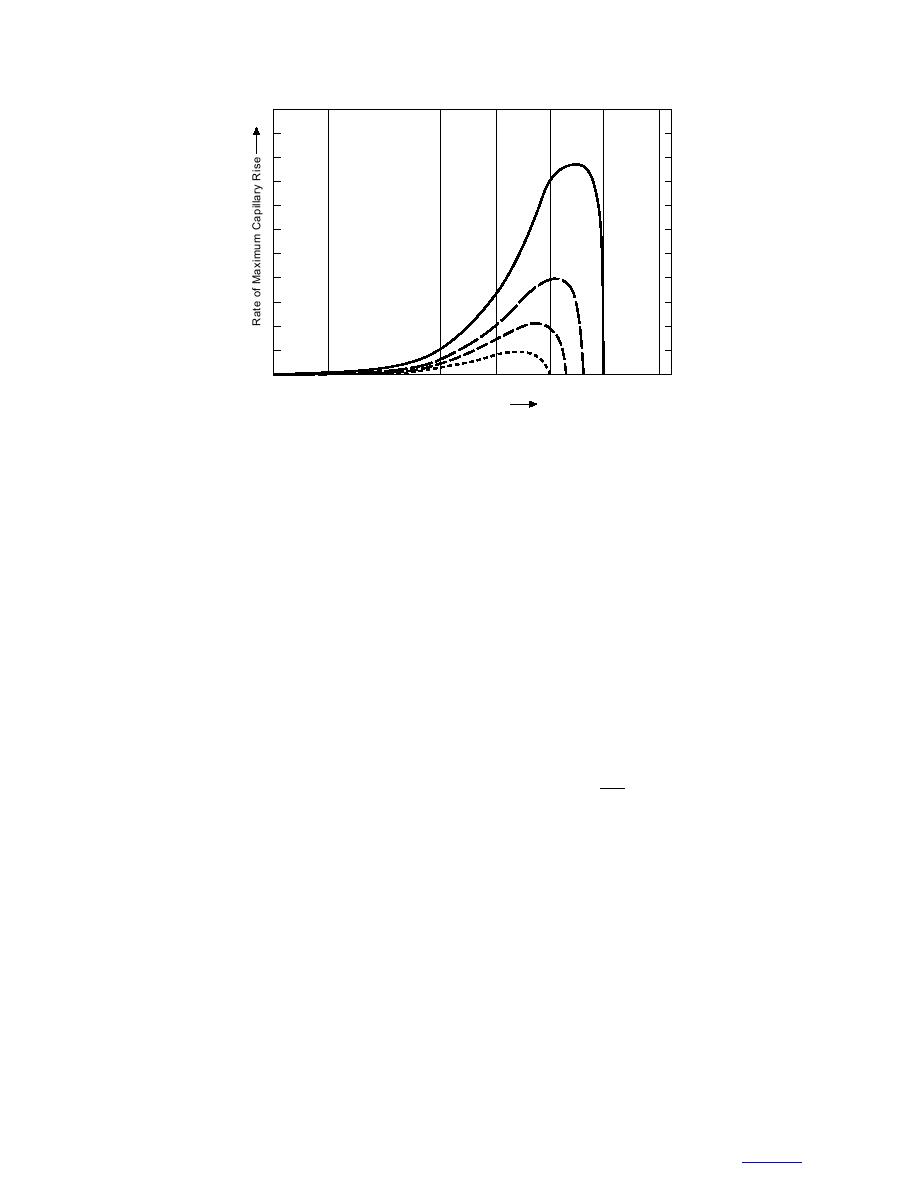
Fine
Lean
Rock
Floor
Silt
Coarse
Clay
Clay
Silt
1m
1.5
2
3
0.0002
0.002
0.006
0.02
0.06
0.2
Particle Size
Figure 4. Curves of maximum capillary rise of sorted soils as a func-
tion of the average particle diameter for a number of different dis-
tances to the groundwater table. (After Beskow 1935.) Note that units
of measurement of the rate of capillary rise were not provided.
the bottom held at 0C (50C m1) is more than twice
and the positive capillary pressure (soil moisture ten-
sion). In addition, in the tests he performed, equal
the maximum temperature gradient measured near the
amounts of overburden pressure and soil moisture ten-
freezing front by other researchers (e.g., Saarelainen
sion reduced frost heave rate by the same amount. Be-
1992, Vikstrm 1997).
skow (1935) also noticed that when the capillary rise
Everett
of water in the soil is lower than the distance between
the freezing front and the groundwater table, then the
D.H. Everett (1961) was one of the first researchers
soil does not heave.
to use the principles of thermodynamic equilibrium to
Beskow froze 32.5-mm-diameter by approximately
describe the processes associated with the freezing of
40-mm-high insulated specimens from the top down
water in porous media. He wanted to answer why, when
with water available at the base using air temperatures
pore spaces are completely filled with ice, further
of 2 to 10C at the top with 0C water at the base. He
growth of ice continues and causes either frost damage
believed that his experiments showed that for relatively
(in a porous solid) or frost heave (in soil). He used eq
permeable soils, frost heave rate is fully independent
17 in the form
of rate of freezing. However, the temperature variations
Ps - Pl = Ψsl r = Ψsl K
dA
~
of his experiments were too small, and the freezing was
(47)
dV
conducted over too short a time to permit the air tem-
perature variation to produce a noticeable effect on frost
where Ps is the pressure of the solid crystal, Pl is the
pressure in the surrounding liquid, Ψsl is the interfacial
heave rate, and we now know that rate of freezing does
influence frost heave rate (e.g., Loch 1979).
tension between the solid and the liquid, Ar is the sur-
Beskow (1935) found that, for relatively coarse soils,
face area of the phase boundary, V is the volume of the
~
heave rate drops off rapidly with increasing grain size;
crystal, and K is the mean curvature of the solid/liquid
however, for fine soils, heave rate drops off slowly with
interface. Thus, if the solid phase is at a different pres-
decreasing grain size. The curves are shaped roughly
sure than the liquid phase, the interface between the
as those shown in Figure 4 (with heave rate being on
phases is curved. For a pure substance, the equilibrium
the y-axis). Figure 4 shows the rate of capillary rise vs.
state is determined only by Ps, Pl, and the temperature.
particle size. Beskow determined that soil type and
Everett presented a simple model of two cylinders
effective stress influenced frost heave. However, his
connected by a capillary tube, each closed by a piston
laboratory freezing tests are not described in detail, and
(Fig. 5). Both cylinders are initially filled with water,
may be extreme compared to field conditions of freez-
and temperatures are lowered so that ice nucleates and
ing. For example, the temperature gradient induced by
grows in the top cylinder. As freezing proceeds, the pis-
2C at the top surface of a 40-mm-high specimen with
tons move to accommodate expansion of the system.
9





 Previous Page
Previous Page
